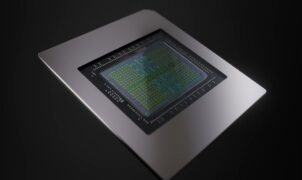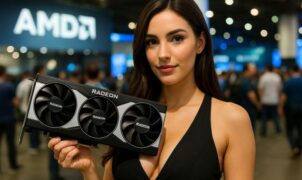TECH NEWS – The semiconductor crisis, coupled with the coronavirus, has brought with it a stock shortage that could be over in the next few months. When will we be able to go to a shop and buy a PS5 or Xbox Series without having to run after them or pre-order them? Here’s what you need to know.
The semiconductor crisis has hit home. It is no longer a matter of one-offs but has struck consumers. The most glaring example is that even a year after consoles such as PS5 or Xbox X Series have gone on sale, it is still challenging to get hold of them. And there is a simple explanation for this: a shortage of the semiconductors that run their internal circuits. Why is this? Is there a solution? How long will this unfortunate situation last?
It is unclear, but what is clear is that this technological crisis is closely linked to that of the coronavirus. It is a complex issue that requires an in-depth treatment to clarify at least three sides of the problem: what has caused this situation, which sectors are affected, and when (and how) everything is expected to return to normal. I can tell you in advance that the answers are not entirely conclusive, but one thing seems clear… and even evident: everything will improve, and there are signs right now that we are beginning to see the light at the end of the tunnel.
Specifically, the year 2023 is being considered as the turning point, when more than a hundred industries (including hardware) will experience a resurgence in integrated circuit production. And by this, I mean companies such as Nvidia or AMD, and many others (including automotive), which have suffered production problems that can be explained by what I will tell you below. Are you coming?
Causes of console stock shortages
In a nutshell:
- There was a dramatic demand for semiconductors due to the confinement.
- There are few manufacturers, and they are in China and Taiwan: high dependence on few companies.
- The 2021 drought in Taiwan made it difficult to manufacture and meet demand.
- The US-China tariff war further hindered the situation.
To claim that the cause of the semiconductor shortage is due to a single reason would be untrue. It is a combination of factors that have resulted in a snowball that is getting bigger and bigger and harder to stop. The problem’s source could be found in the fact that the demand for these circuits is growing, but production capacity has not increased. This dynamic exploded with the emergence of COVID-19, which caused production delays by shutting down several plants around the world.
However, the coronavirus had an even more lethal effect: increased demand for semiconductors. Due to the confinements, there was an explosion in sales of electronic products, from mobile phones and tablets to computers and video game consoles. The need to work or study and be entertained without leaving the house led to an increase in the consumption of these devices (Acer grew by 40%), which translated into a very high demand for chips to manufacture them. The problem?
The problem we pointed out a moment ago: the industry wasn’t ready for this.
It seems hopeless. COVID-19 has shown that the semiconductor industry was too reliant on third parties. Large manufacturers such as AMD outsource the production of their chips to other companies such as TSMC (the Taiwanese semiconductor giant). Consequently, this has an impact on console manufacturers such as Sony, Microsoft and Nintendo. These chips are very complicated to produce, requiring several different stages (more than a thousand) with a very specialised team. Not to mention the investment involved in having a true innovation and development department. That is why it is outsourced: it is the most cost-effective.
But the bottleneck generated by low production and high demand also has other vital causes. One of them is the imposition of tariffs and the resulting trade war between the US and China that started during Donald Trump’s term in office. In short, SMIC (another Chinese semiconductor giant) found it difficult to trade with the US, which aggravated the situation. The other major manufacturer, the TSMC mentioned above, could not be at total capacity due to the drought in Taiwan. So as said: the perfect storm.
Companies affected
In a nutshell:
- The industry most affected is the home electronics industry, which accounts for 50% of the total.
- Nintendo had a robust Switch installed base and has weathered the impact well.
- Sony has sold less PS5 than expected but expects to recover.
- Xbox has also struggled with X Series, with stock shortages.
We are talking about a global crisis that affects any industry that makes significant use of chips. For example, the automotive world has been hit hard, as it comprises 15% of the world’s semiconductor production. However, the industry most impacted is the home electronics industry, which accounts for 50% of manufacturing. And you might say that this affects only the most expensive and cutting-edge chips, but no… it has influenced everything from the ones that run your graphics cards to the ones that allow you to connect to the internet.
The lack of chips is the reason why it’s so hard to get a PlayStation 5 or Xbox Series in the shops… and it’s not in their favour by any means. Companies like Apple could have had even better financial results if the demand had been met. Nintendo has perhaps been one of the least harmed by the situation because it had so many consoles already on the market (92 million Nintendo Switch currently). This has allowed games like Animal Crossing: New Horizons to set records in a context of confinement.
“The shortage started because people started working and studying from home” – Patrick Moorhead, Moor Insights.
However, let’s not kid ourselves… even Nintendo is affected. In fact, the Japanese company is currently working to find production alternatives for Nintendo Switch semiconductors: “We are re-examining hardware design to try to mitigate the effects of the semiconductor shortage”. President Shuntaro Furukawa himself recently admitted that they have not sold as many consoles as they had hoped, leading the company to revise its sales expectations: “We are doing everything we can, but there is a growing sense of uncertainty around production plans.”
PlayStation 5 has a more difficult time because it uses graphics technology that is quite difficult to produce in the current situation. Sony has already officially acknowledged that the shortage of semiconductors is affecting production. In its fiscal results, the company admitted that it has fallen short of its distribution targets (which is self-evident) but expects to increase its sales pace to 22 million consoles by March 2022. Considering they’re currently at 15 million, that’s not an alarming figure at all.
It’s a similar situation with Xbox, although they have a slight advantage, as X Series and S Series are two different hardware, the latter being less demanding in terms of graphics chip output. Still, Microsoft has also been hit hard because it was the first time they released two consoles simultaneously, as Cédric Mimouni told us in an interview. As a relevant fact, the executive defended some aspects that reinforce everything we have said so far: that the demand was very high, that there is a shortage of chips and that it is not clear when everything will be solved. Or well… maybe this last point is now a little clearer. We look at it below.
When will the crisis end?
The problem started in 2020 with the pandemic but has extended into 2021 as demand remains exceptionally high. In all likelihood, much of the difficulties will persist in 2022, with a shortage of semiconductors leading to stock issues again. Phil Spencer (Microsoft’s executive vice president) is aware of this and has already said that the situation will go beyond Christmas for months on end. This is something that technology experts also advocate: the crisis will not go away any time soon, and for the next few weeks, we will continue to have “first-come, first-served”. The best example is not only the crazy pre-order campaigns of PS5 and Xbox Series but also Steam Deck, with a months-long pre-order and, on top of that, a delayed release.
Where is the solution? Lisa Su, head of AMD, argues that the semiconductor industry needs to increase its manufacturing capacity. The Asian giant TSMC already has plans to improve its production with an investment of millions of dollars. At the same time, companies are stockpiling chips to get ahead of potential problems. But there is an even more critical movement, with Europe emerging as the new centre of semiconductor production (with Germany and France leading the way). This would shift the industry’s focus away from the current dependence on China and Taiwan.
The bottom line is that the process will be slow, but supply will eventually meet demand. Basically, semiconductor companies will invest millions while production processes will be improved and made more efficient. The question is: when will it all come? Short answer: it is still a long way off. The semiconductor crisis is not expected to be overcome until 2023. The most optimistic voices speak of September 2022, but everything depends on the pandemic situation and also on the manufacturers’ own performance.
By this, I mean that it will matter a lot how Sony, Microsoft and Nintendo handle the present situation. There is much work behind console manufacturing, with daily calls to secure components. Getting the chips will be essential, and if that means opting for other internal components, it could be considered (as long as they are invisible to the consumer and do not alter the original features). It will be interesting to see how the situation evolves, but be optimistic. This will be a temporary situation from which the industry is sure to emerge stronger.
To sum up:
- The console shortage will last into 2022, although it will improve over time.
- Substantial investment in semiconductor production is already underway.
- Hardware companies could revise components to speed up the process.
- The situation is planned to be fully overcome by 2023.
(Based on the essay of Jesús Bella, chief hardware analyst of 3DJuegos)
Source: 3DJuegos















Leave a Reply